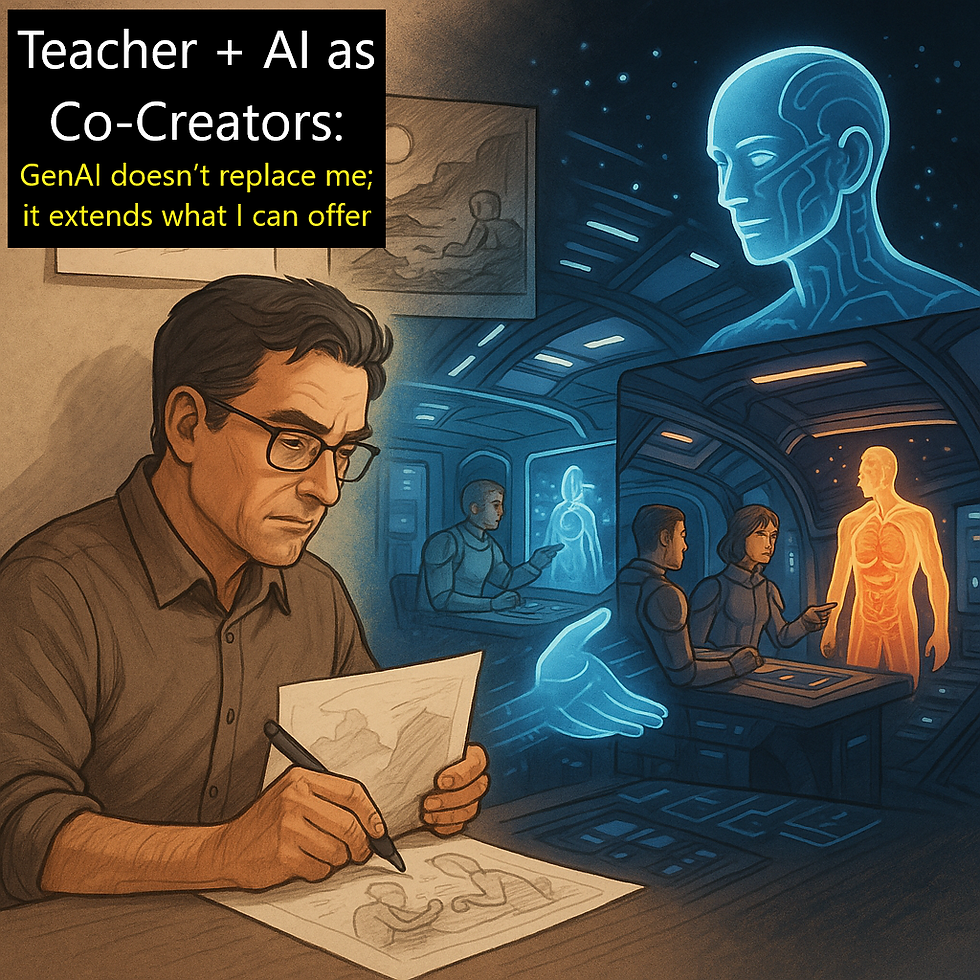Creating Teaching Resources: How to Generate Reliability Diagrams When Resources Are Scarce
- sasha97518
- May 12
- 3 min read
Rezwanul Haque from the University of the Sunshine Coast explains how he used GenAI to help develop extra resources for his students because the textbook did not provide enough examples for students to practice with. Replicate the process using your topic.
🚨 The Problem: The textbook has limited examples
Practice makes perfect, and I have encountered many topics in which there were not enough examples for students to work through. This includes limited examples from the textbook. Creating lots of extra examples was difficult to manage within workload. In this case study, I explain how GenAI can be used to provide extra resources associated with Reliability Diagrams. However, the basic process I outline can be replicated to other contexts.
Reliability diagrams such as these often appear in engineering courses:

This shows a hybrid system with multiple components with their reliability values—some in series, others in parallel. Each block has a defined reliability value (e.g., R₁ = 0.89), and students are expected to calculate overall system reliability.
But problems arise when:
- There are only 2–3 examples in your lecture notes
- You need 10+ diagrams to practice
- You can’t visualise advanced layouts (bridge, k-out-of-n, fault-tolerant setups)
🧠 The Solution: Using GenAI to create extra resources
Undertake the following steps:
1. Uploaded course materials and assignment diagrams (consider IP, copyright, if using a sand-boxed system, have training turned off, etc.)
2. Ask ChatGPT (Scholar GPT and DALL-E2) to analyse the layout and structure
3. Request generation of similar diagrams, varying complexity and structure
4. Iteratively correct and refined the AI's output
From this process, the following diagram was generated to mimic and extend the original structure:



🎨 Customising Reliability Diagrams
Modify your prompts to customise the output. For example, after feeding in prompts like:
- “Make a hybrid of series-parallel with 3 vertical paths”
- “Add cold standby redundancy to one component”
- “Model 2-out-of-3 voting logic”
- “Use real reliability values like 0.93, 0.87, etc.”
...the AI generated a suite of system diagrams like this:


✅An example prompt is below:

✅The generated output is below:

✍️ Why This Matters for Educators and Students
Instead of sifting through slides and books, hoping for more examples, this method allows:
- Educators to instantly generate visual teaching material
- Students to get custom practice problems with labelled values
- Tutors to explain advanced systems with clarity
- Researchers to simulate complex configurations
Use this structure for your own topic. Just make adjustments to reflect your requirements.
Dr. Rezwanul Haque is a Senior Lecturer specialising in Manufacturing Technology at the University of the Sunshine Coast. As an inaugural member of the AAEE Academy, he has contributed significantly to the academic community. In 2019, Dr. Haque served as an Academic Lead at the School of Science and Technology, overseeing the launch of two new Engineering programs and reviewing existing ones. His dedication to learning and teaching earned him the prestigious Senior Fellow status at the Higher Education Academy (UK) in the same year. His research focuses on Engineering Education and material characterisation through neutron diffraction. Recently, Dr. Haque significantly expanded his influence into artificial intelligence and engineering education in academia. He became a founding member of the "UniSC Artificial Intelligence and Academic Integrity Action Plan Working Group," developing ethical guidelines for the use of Generative AI in educational settings.





Comments